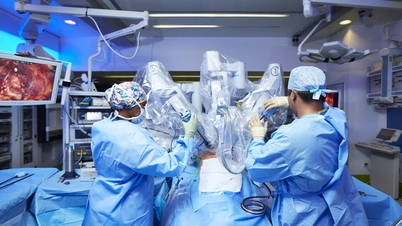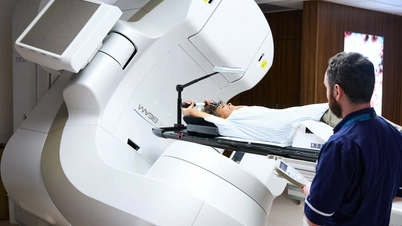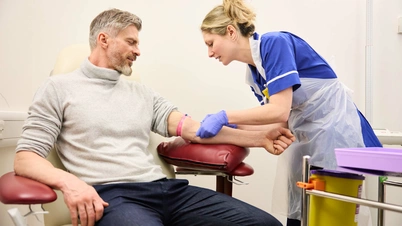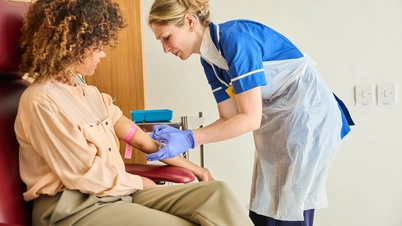Small cell lung cancer
Small cell lung cancer (SCLC) is a rare, fast-growing cancer that requires immediate treatment. However, most cases of small cell lung cancer are not diagnosed until the condition has reached an advanced stage.
At The London Clinic Lung Centre, we provide rapid diagnosis and advanced treatment options that can transform your prognosis.
What is small cell lung cancer?
Small cell lung cancer occurs when healthy cells in the lungs become cancerous and begin to multiply quickly. Clumps of these cancerous cells can form masses (tumours) in the lungs, which may then spread through the bloodstream to other parts of the body – including the liver, brain and bones.
There are two main subtypes of small cell lung cancer:
- Small cell carcinoma – the most common form
- Combined small cell carcinoma – a rarer type, made up of a combination of small cell and non-small cell lung cancer cells
Because this type of lung cancer can spread so quickly, early diagnosis is imperative for positive treatment outcomes.
Small cell lung cancer symptoms
In its early stages, small cell lung cancer rarely causes noticeable symptoms. When symptoms do appear, they are often very similar to those of other types of lung cancer.
Common symptoms include:
- A cough that seems to be getting worse
- Coughing up blood (haemoptysis)
- Chest pain or discomfort
- Pain in the bones (which may indicate that the cancer has spread)
- Difficulty breathing or shortness of breath
- Swelling in the face or neck veins
- Unexplained weight loss
- Fatigue (constant tiredness)
- Hoarseness in your voice when speaking
- Difficulty swallowing (dysphagia)
- Wheezing
- Headaches, dizziness and confusion
It is important to note that these symptoms are common across different types of lung cancer and other conditions, so they do not necessarily indicate small cell lung cancer.
Small cell lung cancer diagnosis
If it is diagnosed early, small cell lung cancer is typically identified through low-dose CT screening. This type of scan uses a much lower dose of radiation than a standard CT scan, meaning it can be performed regularly if you have a high risk of lung cancer – for example, if you have a history of smoking.
If you have not been diagnosed using a low-dose CT and you are experiencing symptoms of small cell lung cancer, your specialist may recommend one or more of the following tests:
- Chest X-ray – often the first port of call to check for any abnormal masses or spots in your lungs
- Positron emission tomography (PET) or CT scans – when performed together, these scans can help identify where a tumour is, its size and if it has spread
- An endobronchial ultrasound (EBUS) – a minimally invasive procedure which uses ultrasound technology to view your lungs in real-time and collect tissue samples (biopsy) for further testing
- Rapid molecular diagnostics – using next-generation sequencing (NGS) to provide a full picture of your tumour’s genetic profile, helping to guide diagnosis and a tailored treatment plan
No matter the stage of your condition, our multidisciplinary team of specialists will carefully review the findings to create a personalised treatment plan that’s built around your unique needs.
What causes small cell lung cancer?
While small cell lung cancer can affect anyone, it occurs most commonly in people who have smoked, currently smoke or have been exposed to second-hand tobacco smoke.
That said, other factors can increase the risk of developing small cell lung cancer, including:
- A family history of lung cancer – there is a genetic component to certain types of lung cancer
- Exposure to carcinogens in a workplace – including asbestos, tar, nickel or arsenic
- Air pollution – such as long-term exposure to fine particulate matter
- Radiation – from cancer screening scans or treatments which use radiation
- Exposure to radon gas – a colourless, odourless gas that naturally comes up from rocks and soil
- Having a weakened immune system – for example, due to conditions that suppress your immune system
Frequently asked questions (FAQs)
The best way to prevent small cell lung cancer is to avoid or quit smoking. The longer you smoke, the greater your risk – but it is never too late to stop. Quitting smoking at any stage will reduce your risk of developing small cell lung cancer and improve your overall health.
Your prognosis will depend on how early your small cell lung cancer is diagnosed. While small cell lung cancer can be curable if caught before it spreads, it is often diagnosed at a more advanced stage.
If the cancer has spread, the treatments listed above cannot cure the disease but can help manage your symptoms, slow its progression and extend your life.
There are a few key differences between small cell lung cancer and non-small cell lung cancer:
- Growth rate – small cell lung cancer tends to spread more quickly than non-small cell lung cancer
- Location – while small cell lung cancer typically develops in one type of cell in one area of the lungs, non-small cell lung cancer can affect up to three different types of cells and may appear in different areas of your body, including the lungs
- Frequency – small cell lung cancer is less common, accounting for around 15% of all lung cancer cases, whereas non-small cell lung cancer makes up approximately 85% of cases
- Size – as their names suggest, small cell lung cancer cells are much smaller than non-small cell lung cancer cells









